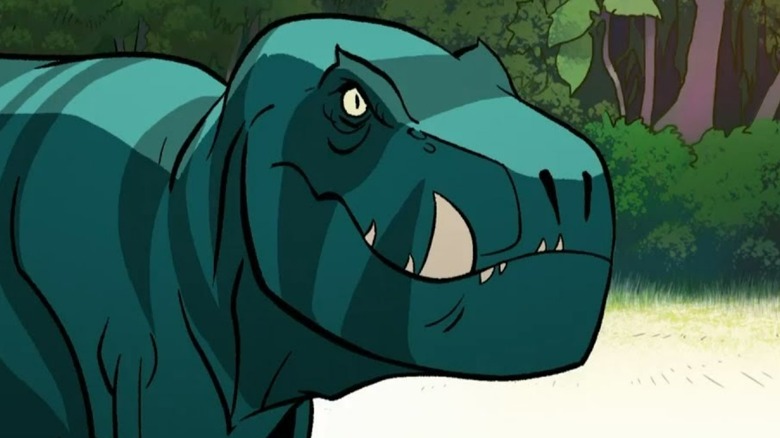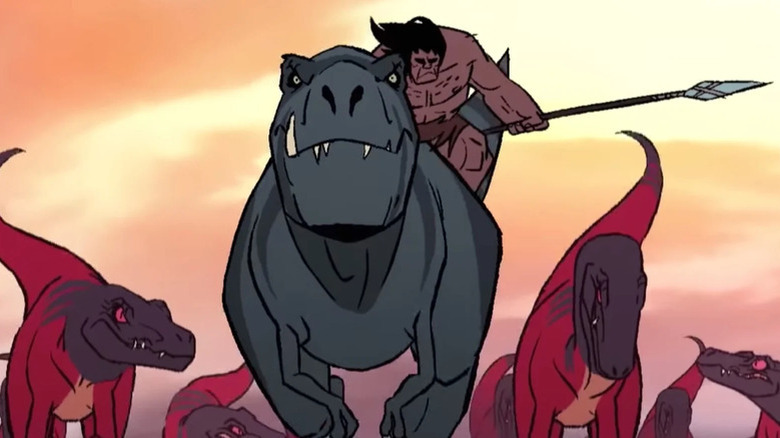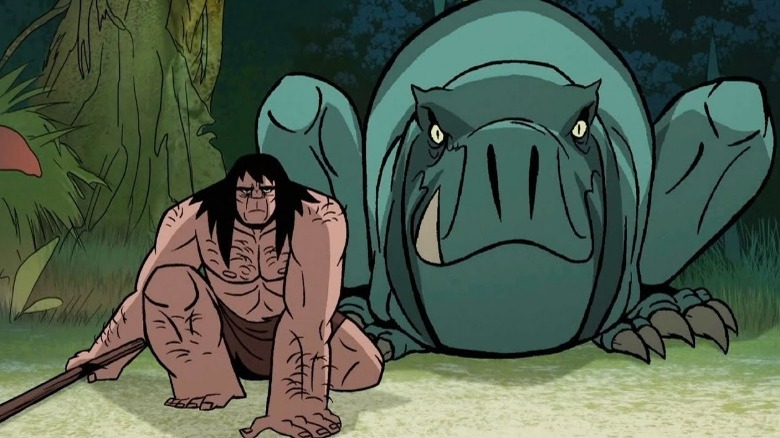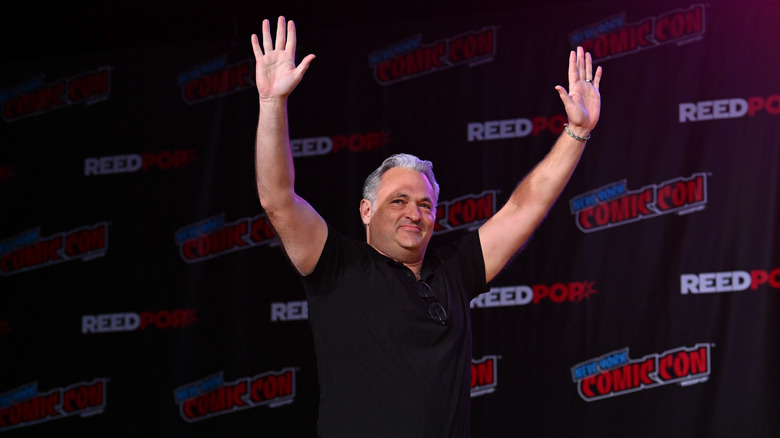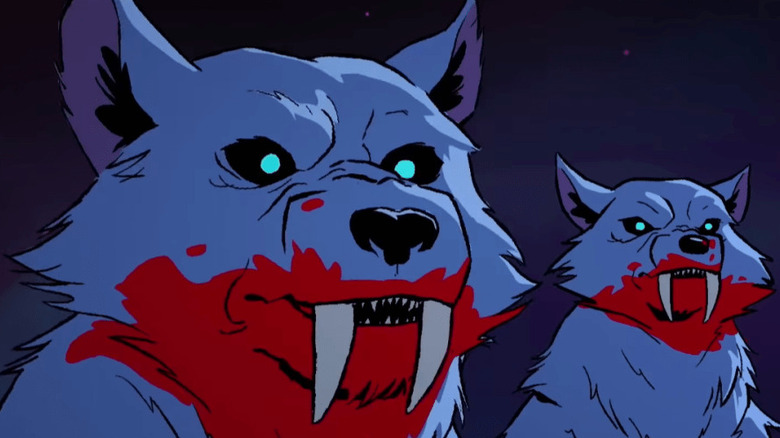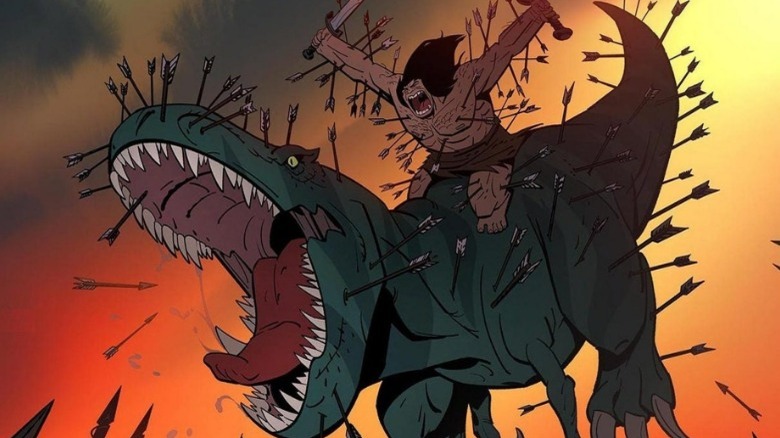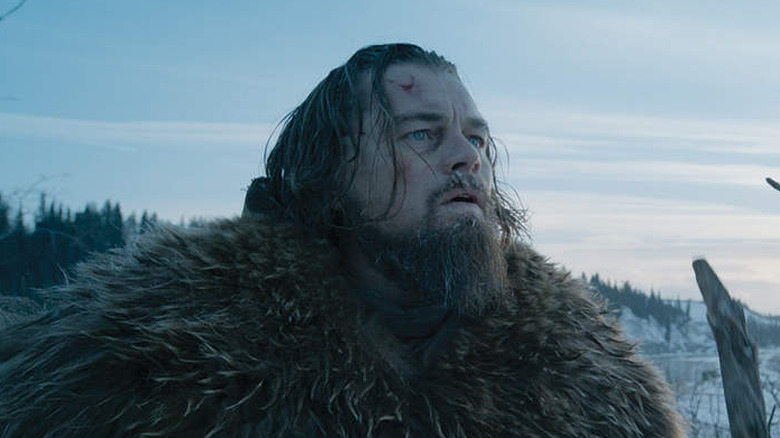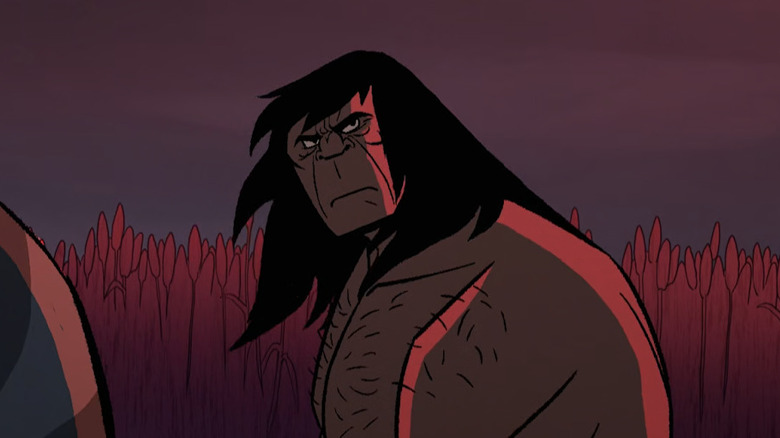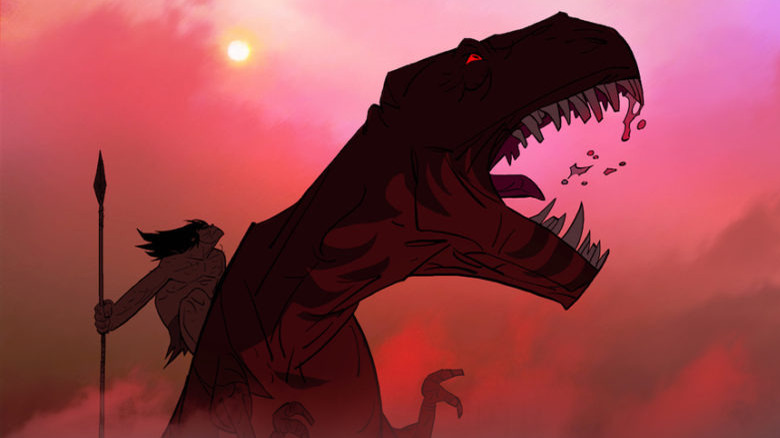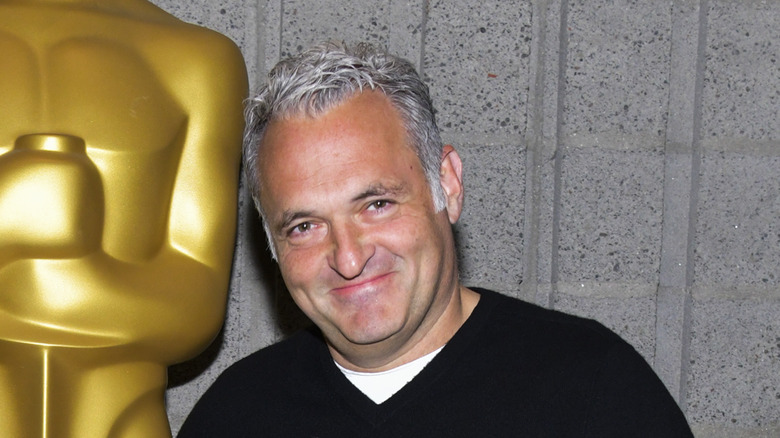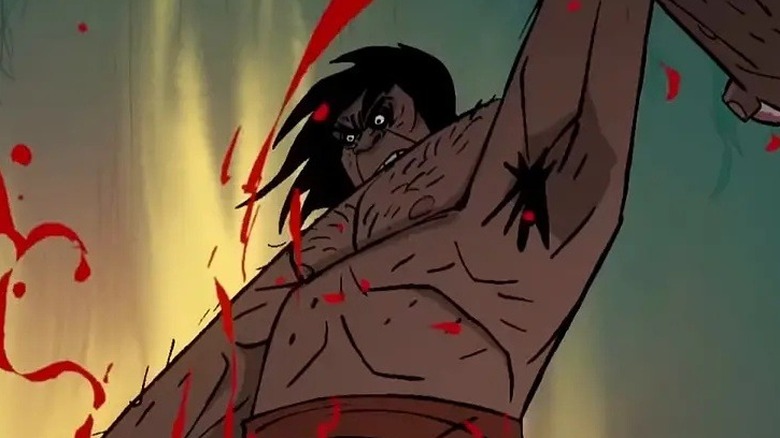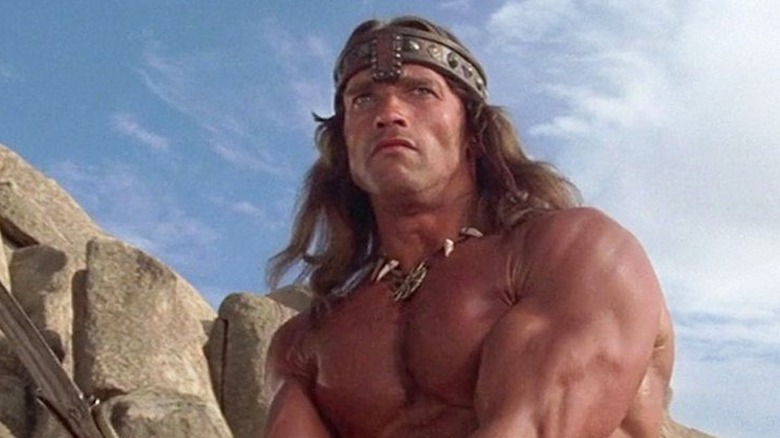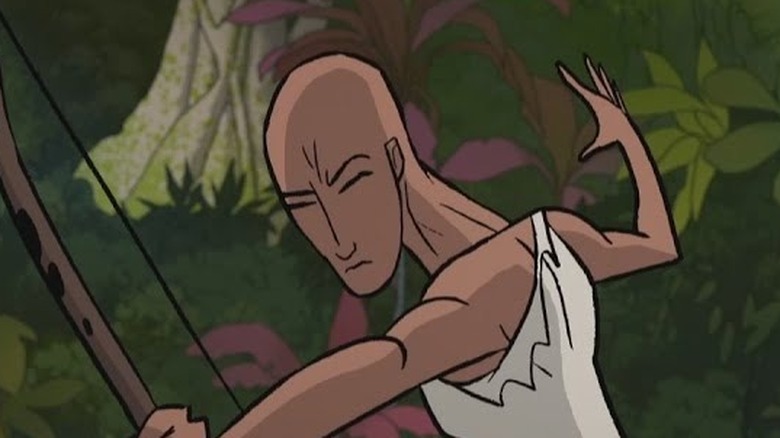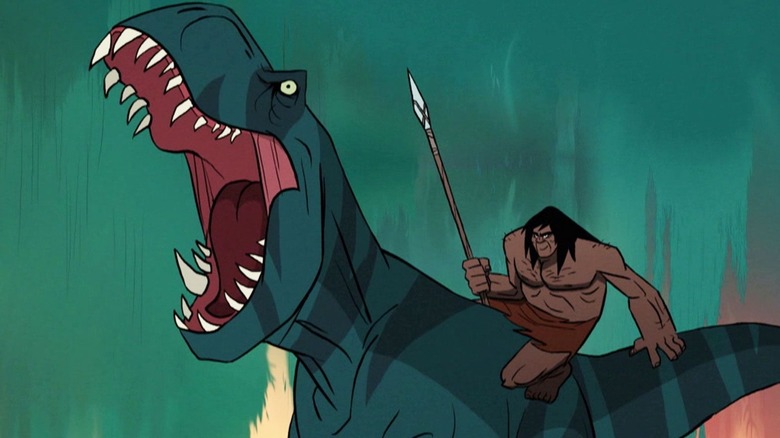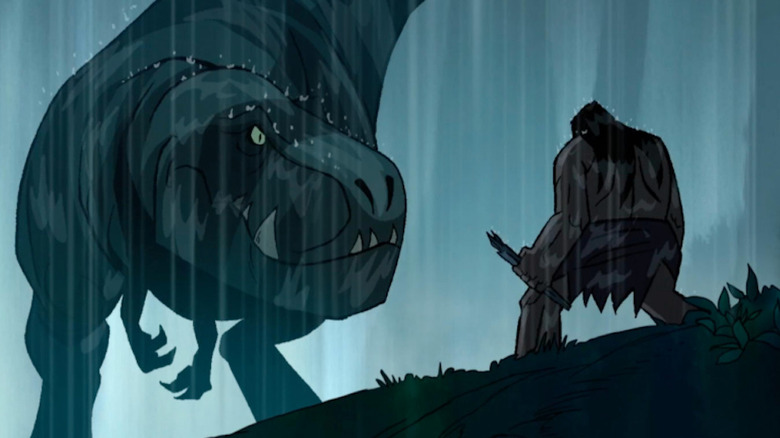Genndy Tartakovsky's Primal: 14 Facts That Will Bring Out Your Inner Reptile
There are few people working in animation today as beloved as Genndy Tartakovsky. He's the writer, director, producer, and showrunner behind several of the best cartoons of the last 20 years. We have Tartakovsky to thank for the "Hotel Transylvania" films, as well as nostalgia-favorite series like "Dexter's Laboratory," "The Powerpuff Girls," "Samurai Jack," "Star Wars: Clone Wars," and "Primal," among others.
Even though Tartakovsky's work is generally a hit with audiences and critics alike, "Primal" sits as one of his most well-received series. The (mostly) dialogue-free prehistoric action series currently boasts universal acclaim among critics and audiences on Rotten Tomatoes, and it continues the animator's amazing streak of impressive work — work that shows no sign of slowing.
With two seasons under its belt, we're unearthing some lesser-known facts about Genndy Tartakovsky's "Primal" that are sure to get your bloodlust going. Grab your spear and let out a roar — here's what you need to know.
The real-world references for Spear's fighting style are extremely fitting
Tartakovsky's other big action series was "Samurai Jack," where he and his animation team obviously drew inspiration from different martial arts to give their characters the flair the show required. When trying to create a similarly effective fighting style for Spear, the main human character in the first two seasons of "Primal," Tartakovsky and his team found their inspiration in nature.
Speaking with Collider, Tartakovsky said that he wanted to do something completely different from Jack with Spear, so they looked to apes. He discussed how Spear isn't trained like Jack — he fights to survive and draws on an innate brute force when he is in danger. Tartakovsky said, "I looked at some ape fighting, monkeys fighting ... It felt right. So the angrier he gets, he gets more hunched over, and more on for using his arms and his legs. And that felt kind of really cool. And it started to really come alive."
Rather than the effortless polish of Jack or the playful strength of Bubbles, Blossom, and Buttercup, Spear's hallmark is an unmatched ferocity and brutality — a perfect match for the show's title.
Fang's inspirations include a big, lovable furball
Spear isn't the only character on "Primal" who had a lot of deliberate thinking put into his inspiration. When it came to creating Fang, Spear's scaly companion, Tartakovsky's team knew they'd again look to nature for a foundation. That said, animating a T-Rex comes with its own difficulties.
In shaping the character of Fang, Tartakovsky said the goal was to keep her very beast-like, rather than giving her cartoonish, emotive expressions. He told Cartoon Brew that when they began developing her, they started with existing media on dinosaurs, such as other movies and illustrations, but "then we went from there and started to develop our own language." Soon, the character started to take shape.
Interestingly, one of Tartakovsky's main inspirations came from closer to home. Speaking with Collider, he revealed, "I have a big St. Bernard. And I could feel everything that she feels, even though she has no change of expression. So it's with a tilt of a head, a certain pose ... There's a little dog, little cat. Like a little variation of something that's familiar and animalistic still."
Tartakovsky's career aspirations are lofty
If you were making a Mt. Rushmore of the most legendary people to ever work in animation, you'd be hard-pressed to find anyone who would deny Hayao Miyazaki a spot on the mountain. The co-founder of Studio Ghibli has a number of incredible animated titles to his name, including "My Neighbor Totoro," "Spirited Away," "Howl's Moving Castle," and many more. Tartakovsky's biggest successes have come in television, but that's not stopping him from shooting for the top by the time his career is finished.
Speaking to Polygon, Tartakovsky was asked whether "Primal" was his "biggest goal" in the world of animation. He had a typically thoughtful response, saying that "Primal" was just one step in the right direction. He strives to do things that reach the same critical and audience response without repeating himself. He references Miyazaki, who has "got 11 films and they're all incredible in their own unique way." Tartakovsky continues, "I want to be a director that's respected, and you know if you're walking into a Genndy show or movie, you would expect a certain thing whether it be comedy or action or drama or whatever, but it's going to be something different."
He wanted people to understand each episode's antagonists
For as much as Tartakovsky makes us care about the protagonists on "Primal," you'd be hard-pressed to point out true villains in many episodes — especially in Season 1. When Fang and Spear encounter the creatures they're fighting, it's about survival. It is rarely about something as simple as "good versus bad." That's one hundred percent by design.
In an interview with Deadline, Tartakovsky discussed how the early episodes of "Primal" drew a lot of their beats from nature documentary series. He described it by saying, "You want the polar bear to live, but you also don't want him to kill the baby seal. And that's the great drama of nature that we really wanted to focus on ... It's kind of just survival, and survival itself is hard and complicated."
Obviously, we're generally rooting for Spear and Fang when we watch an episode of "Primal." The fact that the animation team can make the audience care about every episode's baddies without any drawn-out villain monologues is a pretty impressive feat.
Tartakovsky first imagined Primal as a kids' show
For many artists, it can take a long time to process an inkling of an idea into a fully fleshed-out product. "Primal" was Tartakovsky's baby for many years, and it went through a number of transformations before it was released as the blood-soaked masterpiece we can watch today.
Tartakovsky told Collider that he first started thinking about "Primal" a decade or so before the series was released. Its original version featured a "little kid with the big hair on a little T-Rex." He also originally conceived it as a standard kids' cartoon. He shelved that iteration, as it never really clicked with him, but the idea stuck.
When he returned to the concept later on, he realized the little kid he was drawing was starting to take on features more like an adult. He also changed his target audience as he realized the type of mature, emotional storytelling he could create as he was finishing up "Samurai Jack." When "Samurai Jack" concluded, his boss asked him what he would do next — he pitched an action series to Adult Swim with little to no dialogue, and "Primal" took off from there.
The show's unique pacing comes from some of Tartakovsky's favorite movies
Tartakovsky's animation has qualities that are both extremely deliberate and seemingly effortless, as even mundane scenes from across his work have fun details that stand out. It also doesn't take much time to figure out that he's a movie lover, and his favorites often bleed out in his animation through creative homages and inspirations.
Speaking with Deadline, Tartakovsky noted how his animation has evolved since he began working. He explains that in a show like "Dexter's Laboratory," everything needs to be snappy, with cuts every few seconds. With a show like "Primal," he says he's "trying to slow down. You're trying to stop, let the people, let your audience get sucked into it rather than constantly cut, cut, cut, cut. That's another level of the show that makes it more immersive."
He points out specific films that have deliberate pacing — such as "The Revenant," "Sorcerer," and "Apocalypse Now" — as being particularly inspirational. Without naming specific titles, he also calls out the Spaghetti Westerns of Sergio Leone as also having the pacing he strives to emulate.
At first, he was worried that having no dialogue was a big mistake
"Primal" has a lot of good stuff going for it, but trying to describe it to someone who is unfamiliar with the series usually lands on a fascinating detail — the show's lack of dialogue. In Season 1, there are almost zero words of dialogue spoken. Instead, the story is communicated through action, subtle animation, and the show's music.
It works, but it almost didn't.
Tartakovsky remembers creating the first episode of "Primal," he was worried that his choice to avoid dialogue was going to cause the show to fail. He told Collider that before any sound was added, he wasn't sure the story would come together. He said, "I started to get worried like, 'Oh, I never thought of this. But are people going to miss the dialogue?' Because we're so used to it. Is it an element you're going to miss? And I started to really all of a sudden have doubts like, 'Did I make a huge mistake?'" Thankfully, as music and sound effects started to come into play, he quickly realized he was on the right track.
If there's a Season 3, it will be a completely different story
Not to get too far into spoiler territory, but Season 2 of "Primal" is a fitting endpoint for our main characters. Tartakovsky isn't sure if the series will return for Season 3, but if it does, he sees it going in an entirely new direction.
Speaking with Entertainment Weekly, Tartakovsky said that he doesn't want to continue the story of his surviving characters. He said, "I feel like this season we've done it all, in a way." However, he is not opposed to returning to the world of "Primal." If there are more seasons, Tartakovsky envisions a similar tone and animation style but with entirely new characters and plotlines. He said, "I want it to almost become an anthology show, where Season 3 would still be called 'Primal,' but with a different subheading ... There's more things I want to do with 'Primal,' not necessarily Spear and Fang."
From the sound of it, if there is a Season 3, it could still be quite some time off.
Primal was a big-time award winner
When we say that "Primal" is a critical darling, we aren't fooling around. Not only does Tartakovsky's series have a perfect critics' score on Rotten Tomatoes, but it also has cleaned up at some of the biggest awards shows out there.
The Annie Awards have run for decades, and it's one of the biggest all-animation awards ceremonies out there. At the 2021 Annies, the "Primal" episode "Coven of the Damned" won the award for best animated television production, while the episode "Plague of Madness" won Genndy Tartakovsky an award for outstanding achievement in directing.
The Annies are big in the world of animation, but "Primal" has also brought home some more mainstream awards. At the Primetime Emmys, the episode "Spear and Fang" won awards for art direction and storyboarding, while "A Cold Death" won for character design. "Plague of Madness" also received honors for storyboarding and the coveted outstanding animated program award. Not too shabby for a show almost entirely without dialogue!
Spear's voice actor was originally part of another Tartakovsky project that stalled in development
Even though there isn't a lot of dialogue in "Primal," that doesn't mean you don't need good voice actors. Without lines to show feeling, a different skill set is needed to help show emotion and bring the characters to life. For the show's main human character, Spear, that task falls to voice actor Aaron LaPlante.
LaPlante was working for several years before he was cast by Tartakovsky, but his work with the legendary animator has definitely raised his profile. Speaking with IndieWire, Tartakovsky says that he originally brought LaPlante in to provide a vocal track for his now-defunct "Popeye" animated film. LaPlante provided the vocal tracks for Bluto, the large bully who fights with Popeye over the affections of Olive Oyl.
Though "Popeye" never came to fruition, Tartakovsky was so taken with LaPlante's performance that he cast him as the first (and, for a long time, only) featured voice actor on "Primal." He does tremendous work in bringing the character of Spear to life.
One pulp writer was a massive influence, even leading to the main characters' names
Genndy Tartakovsky may have drawn inspiration from Westerns for the pacing of "Primal," but the plotline and action beats come from a much different source.
In an interview with The Dot + Line, Tartakovsky listed some of his further inspirations for "Primal," centrally citing pulp writer Robert E. Howard, who is probably best known for writing the original "Conan the Barbarian" stories. Long before the character was featured in Marvel Comics or movies starring Arnold Schwarzenegger or Jason Momoa, he was featured in short stories in magazines like "Weird Tales," and Tartakovsky drew major inspiration from one of the OG sword-and-sandals heroes to create "Primal."
Outside of "Conan the Barbarian," Howard had an even more direct inspiration on the series. The very first short story of Howard's that was ever published came out in an issue of "Weird Tales" in 1925 and was set in prehistoric times. The plot revolved around a beautiful woman who was kidnapped by a savage neanderthal. The name of that story? "Spear and Fang."
Mira speaks in Arabic
We've mentioned multiple times that "Primal" features almost no dialogue. For the vast majority of Season 1, that stayed the case — grunts, roars, cries of pain, and the like were all we got. That all changes in the Season 1 finale when Spear and Fang encounter Mira.
Right away, you can tell Mira is different. She looks much more like a traditional, animated human than the savage, beast-like Spear. She also is the first character on "Primal" to speak — but she doesn't speak in English. She is speaking a real language, though. Tartakovsky told Salon that Mira speaks in an ancient Arabic dialect, just like some of the other characters we meet in Season 2 of "Primal."
Another noteworthy element about spoken words in "Primal" is that our protagonist, Spear, only speaks a single word in the entire series — he says Mira's name at the end of the Season 1 finale.
The key to scripting good action is finding the rhythm
For a show with little to no dialogue, "Primal" has the tough task of maintaining audience interest through just its action and animation. If anyone can do that, however, it's Genndy Tartakovsky. He's spent decades perfecting his animation to keep viewers engaged, and he's happy to spill the beans on how to do it. Of course, it's much easier said than done.
When asked about creating an action sequence, Tartakovsky tells CBR that it's similar to composing music. He describes the trick as "you do everything rhythmically. The best martial arts movies ... [are] like a composition. They can go fast-fast-fast-slow or slow-slow-slow-fast — any kind of rhythm you can establish, you're going to be successful." He goes on to describe that you always have to be aiming for a point or purpose and being able to feel that helps you dictate your pacing.
He also describes the opposite as being why action scenes don't work. He says the problems come out "when you're doing things haphazardly, and there's not a plan."
The approach to creating the music of Primal is as unique as everything else
Genndy Tartakovsky is seemingly on another level with the way he visualizes and creates his shows, so it should come as no surprise that the way the music is created on "Primal" is also a fascinating experiment. Tartakovsky doesn't compose the music himself, but he's still heavily involved with how things play out in his show's musical score.
Bleeding Cool caught up with Tyler Bates, who is responsible for composing much of the music on "Primal." Bates shared a few details about how the show's music is created, and it all comes back to Tartakovsky, and explained, "[The score] begins with Genndy's writing and illustrations, but, perhaps most importantly, relies on Genndy's narration and literal live beatboxed performance of the sound design and score in spotting sessions." He also says that they don't create any temporary tracks to accompany the animation early on. In general, what you see in each episode is crafted and created as the only music for that specific scene.
It makes sense that a show with minimal dialogue would have more of an emphasis on musical craftsmanship. Luckily, the team behind "Primal" seems up to the task.
